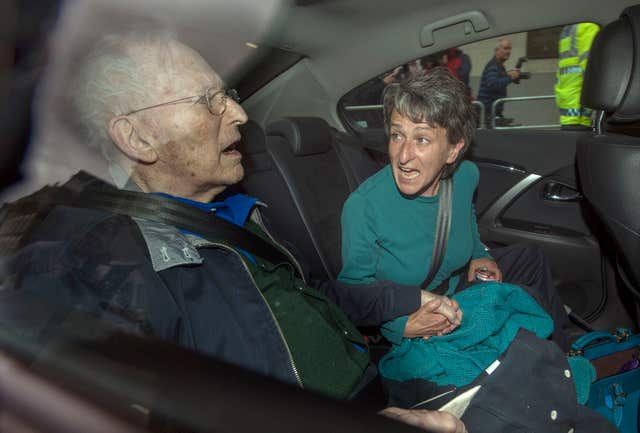Children who reported being sexually abused by the late Labour grandee lord Greville Janner were “let down by institutional failings”, a damning inquiry into police, prosecution and social services responses to their allegations has concluded.
Failure to protect children
Leicestershire Police officers investigating decades of abuse claims against Janner regularly “did not look beyond the often troubled backgrounds” of the alleged victims, who said they were abused in children’s homes in the county between the early 1960s and the late 1980s. The Independent Inquiry into Child Sexual Abuse (IICSA) accused detective superintendent Christopher Thomas, who led Operation Dauntless, the third police investigation into Janner, of being “uninterested” in the allegations, while colleagues were “quick to dismiss” some testimonies.
Janner, a Labour MP from 1970 until 1997 when he was made a peer in the House of Lords, was charged with 22 counts of child sexual abuse offences relating to nine different boys in 2015. He died with dementia later that year while awaiting trial and always denied the allegations.

Professor Alexis Jay, who is chairing the wide-ranging abuse inquiry, said:
Despite numerous serious allegations against the late Lord Janner, police and prosecutors appeared reluctant to fully investigate the claims against him. On multiple occasions police put too little emphasis on looking for supporting evidence and shut down investigations without pursuing all outstanding inquiries.
She also said Leicestershire County Council had a “sorry record of failures” relating to abuse at children’s homes dating back to the 1960s. The report described the decision-making of both Thomas and Roger Rock, reviewing lawyer for the Crown Prosecution Service, as “unsound and strategically flawed”. Jay added:
This investigation has brought up themes we are now extremely familiar with (across the whole inquiry), such as deference to powerful individuals, the barriers to reporting faced by children and the need for institutions to have clear policies and procedures setting out how to respond to allegations of child sexual abuse, regardless of the prominence of the alleged abuser.
“Conveyor belt to abuse”.
More than 30 complainants were involved in the inquiry, with their lawyers describing how poor children in care were on a “conveyor belt to abuse”. They alleged being seriously sexually abused in a range of locations, including schools, a flat in London, a hotel, Janner’s car, and the Houses of Parliament.
The report was particularly critical of Thomas – the senior investigation officer in 2006. It said:
Our overriding sense is that Det Supt Christopher Thomas was uninterested in this investigation, and his decisions to limit the inquiries undertaken appeared to be reflective of a wider failure to pursue the investigation with the rigour it deserved, rather than being motivated by a wish to protect Lord Janner or show him undue deference.
The inquiry did not examine whether or not the allegations against Janner were true. But it found “crucial statements” in 2000’s Operation Magnolia police investigation were “brushed under the carpet”. And it claimed police and prosecutors “appeared reluctant to progress” the subsequent Dauntless investigation.

Historic allegations
Allegations against the former Leicestershire MP first emerged in the 1990s, although the Richard Henriques report in 2016 found that failures by police and prosecutors meant three chances were missed to charge Janner in the 1990s and in operations Magnolia and Dauntless. The inquiry also said Janner should have been subject to scrutiny when he was nominated for a peerage by then-prime minister Tony Blair weeks after sweeping to power in 1997.
Previously, the investigation into MPs, peers, and civil servants working at Westminster found political institutions “significantly failed in their responses to allegations of child sexual abuse”. But it said there was no evidence of a “Westminster paedophile ring”, following allegations which kickstarted the multimillion-pound inquiry and later resulted in the prosecution of fantasist Carl Beech.
The final IICSA report, taking in all 19 strands of the inquiry, is expected to be laid before parliament next year.









